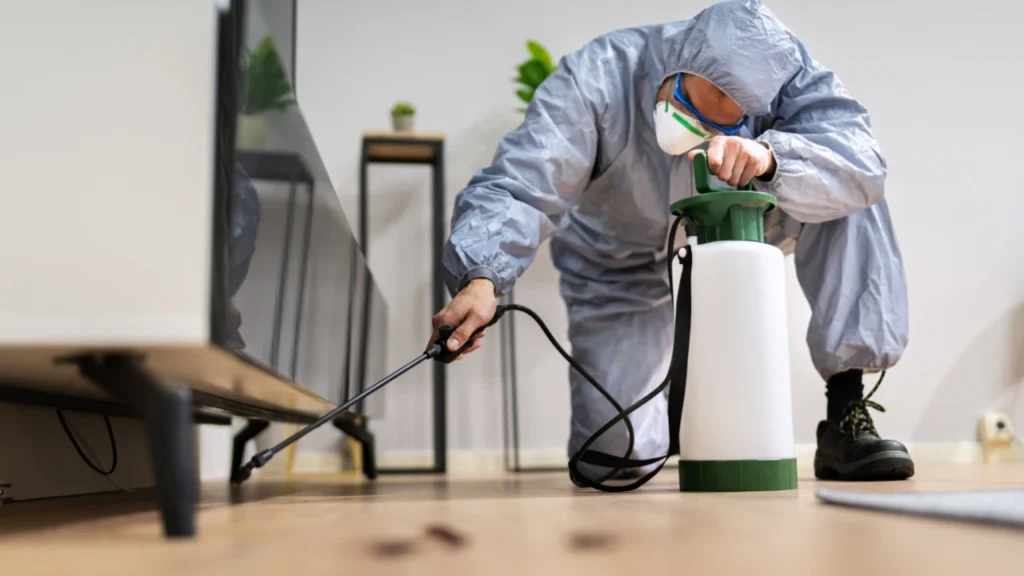Pest infestations represent one of the most common and frustrating challenges faced by property owners across the country. From tiny ants marching across kitchen counters to destructive termites silently damaging structural wood, unwanted pests can compromise both the comfort and safety of our living spaces. Understanding the importance of professional pest control services and knowing when to seek expert help can save property owners significant time, money, and stress while protecting their most valuable investments.
Understanding Common Household Pests
Modern homes attract a wide variety of pests, each presenting unique challenges and requiring specific treatment approaches. Understanding the behavior patterns, preferred environments, and potential dangers associated with different pest species helps property owners recognize problems early and take appropriate action.
Ants represent one of the most persistent household invaders, with over 12,000 known species worldwide. These social insects establish complex colonies that can contain thousands of individuals, making elimination particularly challenging without professional intervention. Common household ants include carpenter ants that damage wooden structures, sugar ants attracted to sweet substances, and fire ants that deliver painful stings.
Rodents such as mice and rats pose significant health risks while causing extensive property damage through their gnawing behavior and contamination of food supplies. These prolific breeders can establish large populations quickly, making early detection and professional treatment essential for effective control.
Cockroaches thrive in warm, moist environments and can trigger allergic reactions and asthma attacks in sensitive individuals. These resilient insects can survive extreme conditions and reproduce rapidly, making professional treatment necessary for complete elimination.
Termites cause billions of dollars in property damage annually, often working silently within walls and foundations for years before detection. These wood-destroying insects can compromise structural integrity, making regular inspections and preventive treatments crucial for property protection.
Spiders, while generally beneficial for controlling other insects, can become problematic when venomous species such as black widows or brown recluses establish populations near living areas. Professional identification and targeted treatment help distinguish between harmless and dangerous species.
Flying insects including mosquitoes, flies, and wasps create nuisances while potentially transmitting diseases or delivering painful stings. These pests often require specialized treatment approaches that address both adult populations and breeding sites.
The Science Behind Professional Pest Control
Professional pest control services employ scientifically-based approaches that combine detailed knowledge of pest biology with advanced treatment technologies. This expertise enables technicians to develop targeted strategies that address specific pest problems while minimizing environmental impact and ensuring long-term effectiveness.
Integrated Pest Management represents the gold standard in modern pest control, emphasizing prevention, monitoring, and targeted treatment rather than blanket pesticide applications. This approach begins with thorough property inspections that identify pest species, population levels, contributing factors, and potential entry points.
Understanding pest life cycles enables professionals to time treatments for maximum effectiveness. Many pests have specific vulnerable stages in their development that respond better to certain treatment methods, making proper timing crucial for successful elimination.
Environmental factors such as moisture levels, temperature, food sources, and shelter availability significantly influence pest populations. Professional technicians evaluate these conditions and recommend modifications that make properties less attractive to pests while supporting treatment effectiveness.
Modern pest control products have evolved significantly from the broad-spectrum pesticides of previous generations. Today’s formulations target specific pest species while minimizing impact on beneficial insects, pets, and humans. Professional technicians understand proper application techniques, safety protocols, and legal requirements associated with these specialized products.
Health and Safety Considerations
Pest infestations create numerous health risks that extend beyond simple annoyance or property damage. Many common household pests carry diseases, trigger allergic reactions, or contaminate food supplies, making prompt professional treatment essential for protecting family health and safety.
Disease transmission represents one of the most serious concerns associated with pest infestations. Rodents can carry over 35 diseases transmissible to humans, including salmonella, hantavirus, and lymphocytic choriomeningitis. Cockroaches spread bacteria and pathogens throughout homes as they travel between unsanitary areas and food preparation surfaces.
Mosquitoes transmit serious diseases including West Nile virus, Zika virus, and various forms of encephalitis. Professional pest control services can significantly reduce mosquito populations through targeted treatments of breeding sites and adult populations.
Allergic reactions to pest-related allergens affect millions of people annually. Cockroach droppings and shed skin particles can trigger severe asthma attacks, particularly in children. Dust mites, while microscopic, produce allergens that cause respiratory problems and skin irritation in sensitive individuals.
Stinging insects such as bees, wasps, and hornets can cause life-threatening allergic reactions in susceptible individuals. Professional pest control technicians have the equipment and expertise necessary to safely remove nests and reduce stinging insect populations around homes and businesses.
Food contamination from pests creates serious health hazards while resulting in costly food waste. Rodents and insects can contaminate far more food than they actually consume through their droppings, urine, and pathogen transmission.
Property Protection and Structural Integrity
Beyond health concerns, many pest species cause significant property damage that can compromise structural integrity and result in expensive repairs. Understanding these risks helps property owners appreciate the value of professional pest control services and preventive treatment programs.
Termite damage represents the most expensive pest-related property threat, with these insects causing over five billion dollars in damage annually in the United States alone. Subterranean termites build extensive tunnel systems that allow them to access wooden structures from below ground, often remaining undetected until damage becomes severe.
Carpenter ants excavate galleries in wooden structures to create nesting sites, weakening structural elements over time. Unlike termites, carpenter ants don’t consume wood but their excavation activities can cause significant damage, particularly in moisture-damaged areas.
Rodent gnawing behavior creates multiple problems for property owners. These persistent chewers can damage electrical wiring, creating fire hazards, while also compromising insulation, drywall, and stored materials. Their constant gnawing is necessary to control continuously growing teeth, making this behavior impossible to eliminate without removing the rodent population.
Wood-boring beetles attack both hardwood and softwood structures, creating tunnels that weaken structural elements. These insects often work undetected for years, with emergence holes providing the first visible evidence of infestation.
Moisture-related pest problems often compound property damage by attracting pests to areas already compromised by water damage. Professional pest control services can identify these conditions and recommend integrated solutions that address both pest problems and underlying moisture issues.
Choosing Professional Pest Control Services
Selecting the right pest control service provider requires careful evaluation of several important factors that influence both treatment effectiveness and overall satisfaction. Understanding these considerations helps property owners make informed decisions that protect their investments while ensuring family safety.
Professional licensing and certification requirements vary by state, but reputable pest control companies maintain all necessary credentials while investing in ongoing training for their technicians. This expertise ensures proper identification of pest species and selection of appropriate treatment methods.
Experience with specific pest problems in local areas provides valuable advantages for treatment success. Established pest control companies understand regional pest species, seasonal patterns, and environmental conditions that influence treatment effectiveness.
Treatment approaches and philosophies vary significantly among pest control providers. Companies that emphasize Integrated Pest Management techniques typically provide more sustainable results while minimizing environmental impact compared to those relying primarily on chemical applications.
Safety protocols and product selection demonstrate a company’s commitment to protecting customer health while achieving effective pest control. Reputable providers use EPA-registered products according to label specifications while implementing safety measures that protect occupants and pets during and after treatment.
Service guarantees and follow-up protocols indicate a company’s confidence in their treatment methods while providing customers with recourse if pest problems persist. Understanding guarantee terms and conditions helps customers evaluate the true value of different service options.
Integrated Pest Management Strategies
Modern professional pest control services employ Integrated Pest Management strategies that combine multiple approaches for maximum effectiveness while minimizing environmental impact. This comprehensive methodology addresses the root causes of pest problems rather than simply treating symptoms.
Prevention represents the foundation of effective pest management, focusing on eliminating conditions that attract and support pest populations. This includes identifying and sealing entry points, eliminating food and water sources, reducing shelter opportunities, and modifying environmental conditions that favor pest development.
Monitoring and inspection protocols help detect pest activity in early stages when treatment is most effective and least expensive. Professional technicians use specialized equipment and techniques to identify pest species, population levels, and activity patterns that guide treatment decisions.
Biological control methods utilize natural predators, parasites, and pathogens to reduce pest populations without chemical applications. These approaches work particularly well for certain pest species while supporting overall ecosystem balance.
Physical and mechanical control measures include traps, barriers, and exclusion techniques that prevent pest access or eliminate existing populations. These methods often provide immediate results while supporting long-term management goals.
Chemical control applications, when necessary, utilize targeted products that address specific pest species while minimizing impact on non-target organisms. Professional technicians understand proper application techniques, timing, and safety protocols that maximize effectiveness while ensuring occupant safety.
Seasonal Pest Control Considerations
Pest activity patterns vary significantly throughout the year, with different species becoming problematic during specific seasons. Understanding these patterns helps property owners anticipate pest problems and schedule preventive treatments for maximum effectiveness.
Spring pest control focuses on preventing establishment of overwintering pest populations as temperatures warm and activity increases. This includes treating for ants, termites, and other insects that become active as soil temperatures rise.
Summer pest management addresses peak activity periods for most pest species while protecting outdoor living spaces from mosquitoes, wasps, and other flying insects. This season also requires attention to moisture control and food source elimination as pests seek water and sustenance during hot weather.
Fall preparation involves preventing pest entry as temperatures drop and outdoor insects seek warm shelter for winter survival. Sealing entry points and eliminating attractants becomes particularly important during this transition period.
Winter pest control addresses indoor populations of rodents, cockroaches, and other pests that remain active throughout cold months. This season also provides opportunities for structural repairs and preventive treatments that support year-round pest management goals.
Specialty Pest Control Services
Certain pest problems require specialized knowledge and equipment that general pest control services may not provide. Understanding when to seek specialty services ensures appropriate treatment for unique or challenging pest situations.
Wildlife control specialists handle larger pest animals such as raccoons, squirrels, bats, and birds that require different approaches than typical household insects. These professionals understand legal requirements and humane methods for wildlife management while addressing property damage and health concerns.
Bed bug elimination requires specialized heat treatments, chemical applications, and follow-up protocols that differ significantly from standard pest control approaches. These persistent parasites have developed resistance to many common pesticides, making professional expertise essential for successful elimination.
Stored product pest management addresses insects that infest food storage areas, pantries, and commercial food facilities. These specialists understand food safety requirements while implementing treatment strategies that protect stored products from contamination.
Structural pest control focuses on wood-destroying insects such as termites, carpenter ants, and wood-boring beetles that threaten building integrity. These services often include ongoing monitoring and preventive treatments that protect property investments over time.





